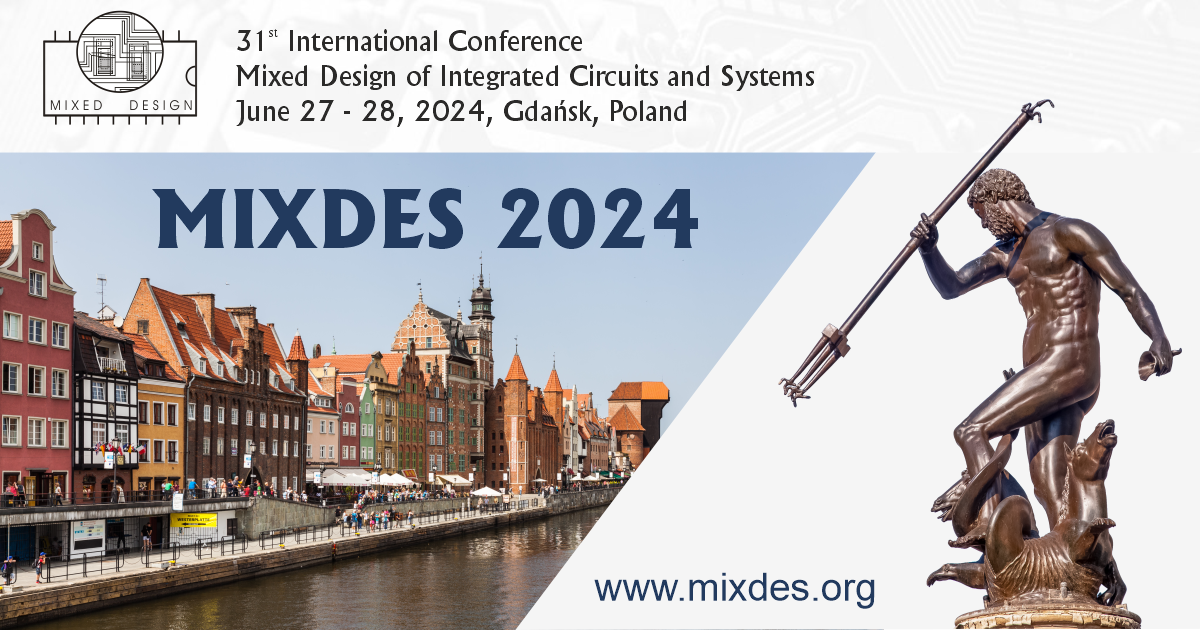- 2.6Impact Factor
- 6.1CiteScore
- 17 daysTime to First Decision
Mixed Design of Integrated Circuits and Systems
This special issue belongs to the section “Circuit and Signal Processing“.
Special Issue Information
Dear Colleagues,
This Special Issue is devoted to the mixed design aspects of integrated circuits and systems encompassing interdisciplinary research in design, modeling, simulation, testing, and manufacturing in various areas, such as micro- and nanoelectronics, semiconductors, sensors, actuators, biomedical applications, and power devices. The topics of this Special Issue include, but are not limited to, the following:
- Integrated Circuits and Microsystems
- Thermal Issues in Microelectronics
- Microelectronics Technology and Packaging
- Testing and Reliability
- Power Electronics
- Signal Processing
- Embedded Systems
- Medical Applications of Microsystems
Dr. Grzegorz Jablonski
Guest Editor
Manuscript Submission Information
Manuscripts should be submitted online at www.mdpi.com by registering and logging in to this website. Once you are registered, click here to go to the submission form. Manuscripts can be submitted until the deadline. All submissions that pass pre-check are peer-reviewed. Accepted papers will be published continuously in the journal (as soon as accepted) and will be listed together on the special issue website. Research articles, review articles as well as short communications are invited. For planned papers, a title and short abstract (about 250 words) can be sent to the Editorial Office for assessment.
Submitted manuscripts should not have been published previously, nor be under consideration for publication elsewhere (except conference proceedings papers). All manuscripts are thoroughly refereed through a single-blind peer-review process. A guide for authors and other relevant information for submission of manuscripts is available on the Instructions for Authors page. Electronics is an international peer-reviewed open access semimonthly journal published by MDPI.
Please visit the Instructions for Authors page before submitting a manuscript. The Article Processing Charge (APC) for publication in this open access journal is 2400 CHF (Swiss Francs). Submitted papers should be well formatted and use good English. Authors may use MDPI's English editing service prior to publication or during author revisions.
Keywords
- mixed design
- integrated circuits and systems
- embedded systems
- modeling
- signal processing
- technology
- packaging
- testing
- reliability
- medical applications

Benefits of Publishing in a Special Issue
- Ease of navigation: Grouping papers by topic helps scholars navigate broad scope journals more efficiently.
- Greater discoverability: Special Issues support the reach and impact of scientific research. Articles in Special Issues are more discoverable and cited more frequently.
- Expansion of research network: Special Issues facilitate connections among authors, fostering scientific collaborations.
- External promotion: Articles in Special Issues are often promoted through the journal's social media, increasing their visibility.
- e-Book format: Special Issues with more than 10 articles can be published as dedicated e-books, ensuring wide and rapid dissemination.

